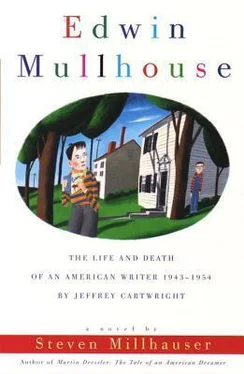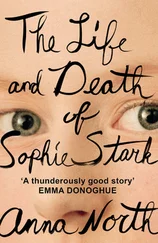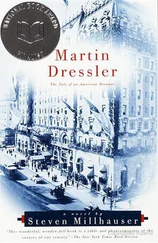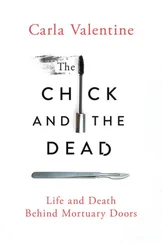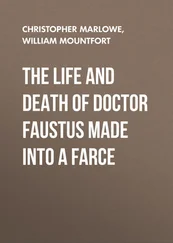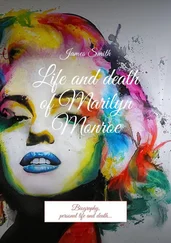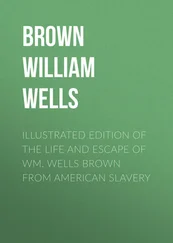His favorite word between the ages of two and three was “Wussat?” accompanied by a pointing finger; his favorite game was to search for objects without names. “Wussat?” he would cry, pointing to his foot. “Shoe,” Mrs. Mullhouse would say. “Unless of course you mean foot. Or did you mean toe, Edwin?” “Wussat?” he would say, bending over and pointing again. “Shoelace,” Mrs. Mullhouse would answer. “You know: shoelace. A lace for your shoesy-woozies.” “Wussat?” “That’s a whatchamacallit, Edwin. You know: a whoosiewhatsits. Oh what is the name of that stupid tongue. Oh: tongue. Only it’s not a real tongue, Edwin, it’s a shoe tongue.” “Wussat?” “Oh dear, Edwin, I really — it doesn’t have a name, it’s just a sort of hole for the shoelace to go through. You’d better ask daddy.” Daddy was the real test. Daddy knew everything, or almost everything, and what he didn’t know he knew how to find out. “Wussat?” “Window.” “Wussat?” “Windowsill.” “Wussat?” “Frame. All of this is called the frame, boys. This piece here is called the sash; it holds the glass. This is a rail. Look: top rail, bottom rail. These things are stiles. And up here too: top rail, bottom rail, stile, stile.” “Wussat?” “Damned if I know.” There followed a search through the mahogany bookcase, interrupted by cries of “Helen, have you seen my carpentry book, you know, the one with the blue and red cover?” and at last pulling out a book Mr. Mullhouse sat crosslegged on the floor before the bookcase and turned pages wildly until he came to a picture of a window. “Aha!” he cried, looking up and raising a finger. “The correct term, gents, is: sash bar.” He sighed and shook his head. “You’d think it would have a more splendid name.”
There is a picture of Edwin from this period showing him seated on the armchair, leaning forward with a frown and pointing a finger. Under the picture, in Mr. Mullhouse’s small neat print, is the single mysterious word: “Tripod.”
I must report that although Edwin proved unready for my child’s dictionary, with its small illustrations and its elaborate pronunciation apparatus, he did prove ready for two simple alphabet books that Mrs. Mullhouse had given him during his silent phase, and which he now pondered for hours at a time. The first contained on each left-hand page a vast capital letter, and on each right-hand page a ridiculous jingle. What fascinated the future author was not the jingle but the letter. Each one, drawn in three dimensions and casting a shadow, was inhabited or infested by little two-dimensional manikins with eyes and smiles and shoes. Thus one manikin hung by his arms from A’s bar while another slid down a side; one lay on his stomach on top of B while another scaled the straight side like a mountain-climber and yet another peeped up over the bar; and one lay on his back in the curve at the base of C, with his legs crossed and his hands behind his head, looking up at another who was hanging by his knees from C’s top. I cannot help thinking that this early experience of letters as places lingered on in Edwin’s imagination, so that when much later he spoke of building a world of words he was thinking partly of a real place where he could play, climbing among the letters, poking his head out of holes, swinging from bars, and sliding down slopes. The second alphabet book gave each letter a personality. Thus A had two eyes in his triangle and his bar was a handlebar mustache; B was a snowman with a tall black hat; and C wore a cowboy hat and had an eye under the top curve. And here we have the evident origin of Edwin’s later theories concerning the personalities of letters and the physical properties of words. He loved to spout all sorts of nonsense about the pointy head of A, the pot belly of B and his son b, the moon C, the ladybug D, and so forth, and he used to claim that all words looked like things: “yellow” was a ship with a rudder and two smokestacks, “bad” was two chairs on opposite sides of a table, “did” was three people standing on line. All of which struck me then, and strikes me now, as highly ridiculous, except perhaps as evidence of Edwin’s endless fascination with words. And yet they tease me, these books in which letters are more than letters; and I cannot help wishing that Edwin had never laid eyes on them at all.
Edwin’s passion for adult literature barely survived his second birthday. That summer a vast number of children’s books appeared in the house. Some volumes contained on each page a single line of large print and over it, as if the words were dreaming, a towering illustration. Others contained eight or ten lines of print per page, arranged variously in relation to the illustration. Still others contained whole pages of print, inhabited here and there by little colored pictures, like birds in a tree of words. These books multiplied with bewildering rapidity until, by his third birthday, Edwin was the proud owner of his personal bookcase, made by his father from two orange crates and painted a dark shiny blue. In the course of the next year, as the room began to assume its final shape, acquiring a second bed and the first of its two large gray bookcases (see Chapter 1), the orange-crate bookcase became a random repository for picture puzzles, small stuffed animals, cowboy pistols, and shoeboxes filled with marbles or broken crayons; but with the acquisition of the second gray bookcase, the little orange-crate bookcase found its way into Karen’s room, where for a while it housed dolls and coloring books, until one day it found its final resting place in a corner of the vast damp cellar beside Mr. Mullhouse’s mahogany folding desk, gathering to itself old notebooks, piles of damp white paper, boxes of index cards, manila envelopes, and a small silver model of the Washington monument with a thin glass thermometer running up one side. Farewell, bookcase: the memory of your history has touched me deeply, as if by escaping the chronology of this chapter you had made some last proud effort before lapsing into oblivion.
And since I have broached the subject, let me say that memory and chronology simply do not make good bedfellows. Indeed it sometimes seems to me that I should abandon the madness of chronology altogether and simply follow my whims, launching immediately, for instance, into Edwin’s bloody death and passing from there to a portrait of Edwin’s grandmothers, whom I haven’t even introduced yet even though they have been hovering about for years, and from there perhaps to the death of Arnold Hasselstrom. And yet, after all, no. My task does not resemble the making of a jigsaw puzzle, here a shoe and part of a baggy cuff, there a piece of cloud shading into blue, but one of those connect-the-dots pictures that lead you in a series of invariable steps from a seeming chaos of numbers to a sudden recognition of the still incompleted pattern to the final closing of the gap, when number 63 is at last joined to number 1 and you see before you a flower, a kitten, a weeping clown. And of course there are Edwin’s favorites, the ones with part of the picture filled in beforehand, so that in a swarm of buzzing numbers you see a lone hand holding the top of a watering can. Or to change the image: let chronology be the meter of my biography, memory my rhythm: now matching so closely as to be barely distinguishable, now tugging against one another, now drifting so far apart that the reader begins to frown and tug at his chin, now coming together with a bang. Where was I?
All of Edwin’s earliest books contained on the inside front cover a space for his name, usually preceded by the phrase THIS BOOK BELONGS TO. In each of them obedient Edwin entered, in careful wiggles, the illegible scribble of his name. He seems to have abandoned this practice on or before his third birthday, since the book I presented to him on that occasion, A Child’s Golden Treasury of Immortal Poems, is not signed by him, and a large number of other books, which by their vocabulary and general nature unquestionably belong to the Early Years, are likewise unsigned. When his name again appears it is printed in five large tilted capital letters. Since Edwin did not learn to copy the letters of his name until his fourth birthday, when he received a tall blackboard on an easel with an alphabet running around the sides, the volumes he acquired during his first bookish year may be determined with a satisfying accuracy. Here follows a complete list of all the books Edwin is known to have owned between the impressionable ages of two and three:
Читать дальше
